“Rokugo Manzan” flourished during the Nara period.
Central to the story of the Kunisaki Peninsula is the “Rokugo Manzan” culture, a syncretism of Shintoism and Buddhism that flourished through the fusion of the Usa and Hachiman deities, the Tendai sect of Buddhism, and mountain worship. It began in the Nara period when Nimon Bosatsu founded 28 temples in 6 valleys on the Peninsula. This led to the formation of a unique culture, including masonry that produced the largest polished Buddha cliffs in Japan, as well as Buddhist services and festivals such as the “Shujyo Onie” and “Kebesu Festival.” The “Mine-irigyo” is still held once every 10 years and involves traversing 150 km through plunging cliffs and valleys, following in the footsteps of Nimon Bosatsu. This path of ascetic practice is the “Mine-Michi.”
The “Kunisaki-hantou Minemichi Long Traill,” is a ten-section, 150-km hiking route that combines parts of the historic “Mine-Michi” and traditional community roads, allowing hikers to experience the history and climate of the Kunisaki Peninsula while sensing the spirit of mountain worship. For this trip, we are joined by Australian transplant and Tokyo resident James, starting at Nakayama Senkyo(“T4”) and walking approximately 60 km from “K1” to “K4”.
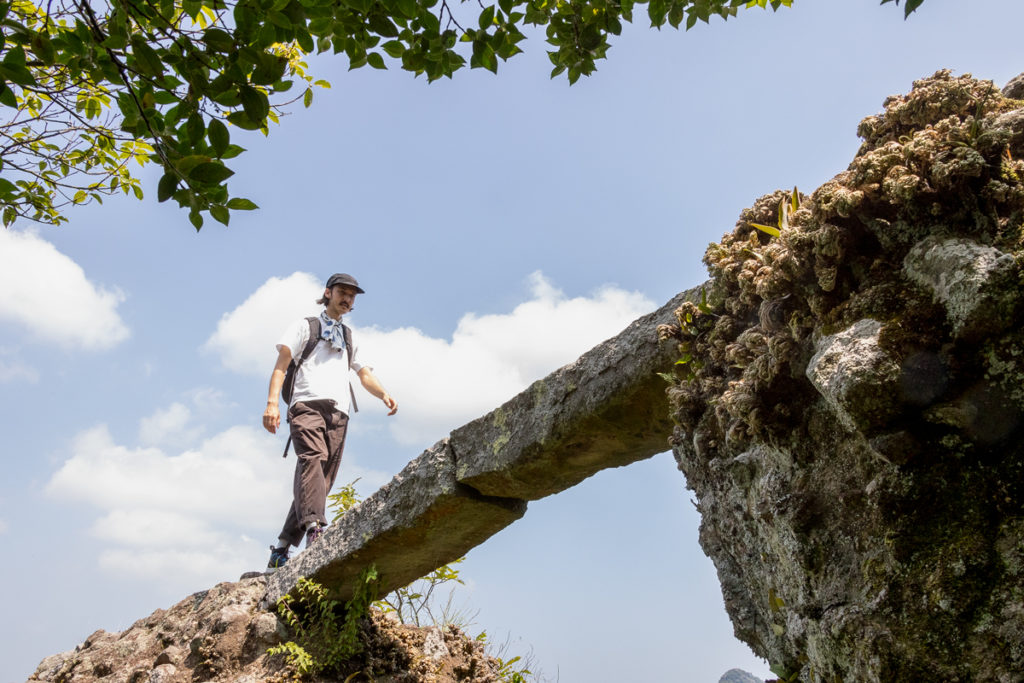
“Along the six valleys of Rokugo, dotted around Mt.Futago, there were many paths used for daily life that traversed the ridges between settlements. These old routes have been reconstructed and developed as trails. The old Jizo and Buddhist stone figures excavated during the reclamation work have been preserved as much as possible to give visitors a taste of the ambience of life during the area’s heyday. Be sure to pop in and visit the temples along the route to get a sense of the history of the faith.” (Mr. Seiichi Takahashi, Secretary General of Kunisaki Peninsula Ridge Road Trail Club)
Guiding us through the Nakayama Senkyo Area with its vertically towering rock peaks is Ms. Chiai Asano, who moved to Kunisaki from Tokyo two years ago. She became hooked on mountain climbing after coming to live here and is now training to be a guide. Asano explains her passion for the place: “The attraction of this trail is the remarkable topography hewn by volcanic activity and erosion from wind and rain.”
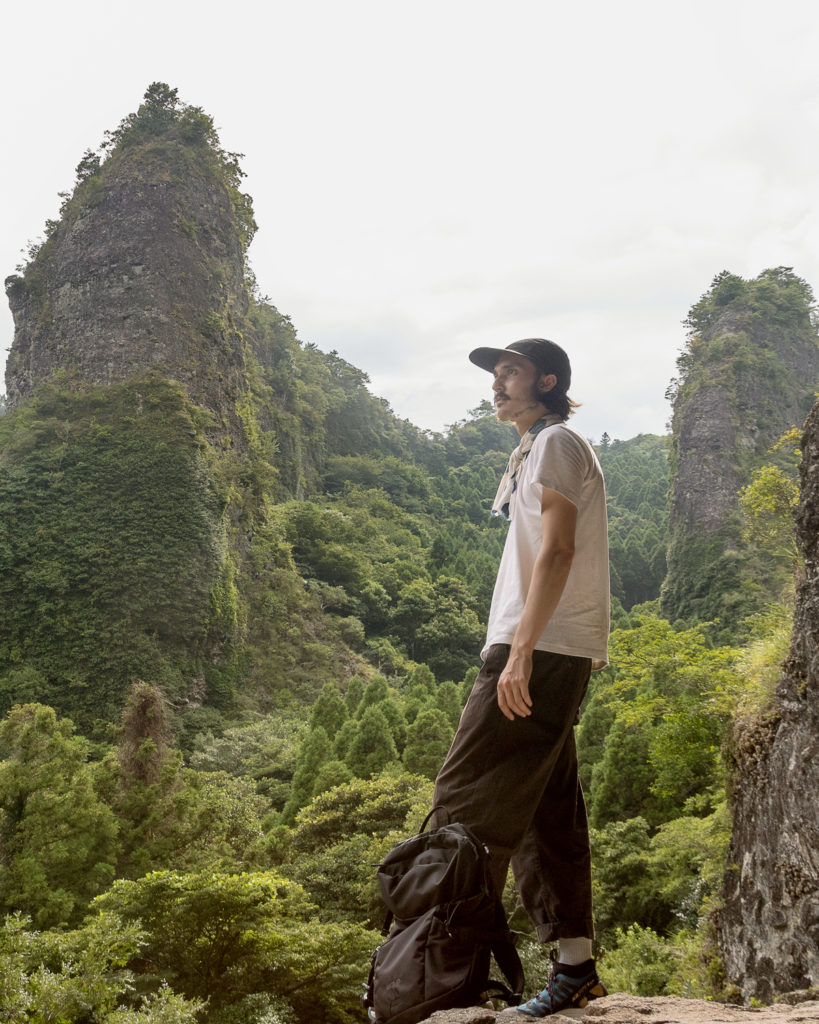
We move from Nakayama Senkyo to the “K1” section. James was in awe of a large rock called “Daifudo Iwaya” with a stone Buddha perched on the rock wall at the back.
“When you get a view like this, it’s usually a tourist attraction with railings and signs obscuring the view, but the way it’s managed here with the autonomy of the hiker in mind is brilliant.”
Scenes and cultures mature when people enjoy activities at their own risk. This approach to maintenance and management that values hiker autonomy may be one path for the development of long trails in Japan.
On the trail, you will see a number of ponds. Yamaguchi Pond is one of the largest on the Kunisaki Peninsula, as well as Hazama Shin-ike Pond and Hazama Furu-ike Pond. The clear waters of the former are especially refreshing against the backdrop of a sawtooth oak forest.
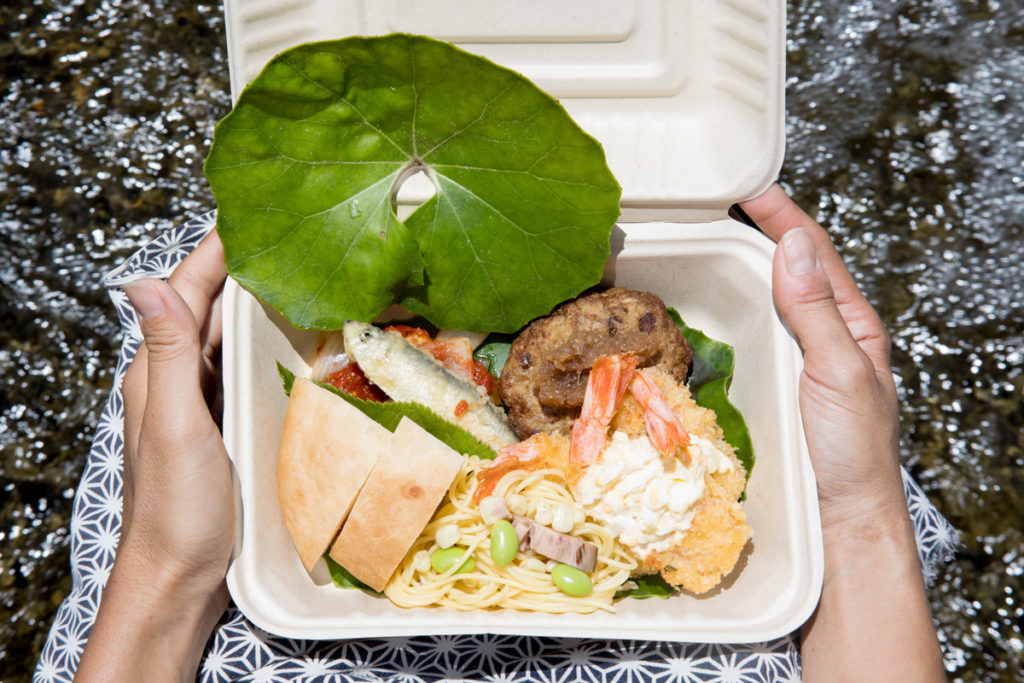

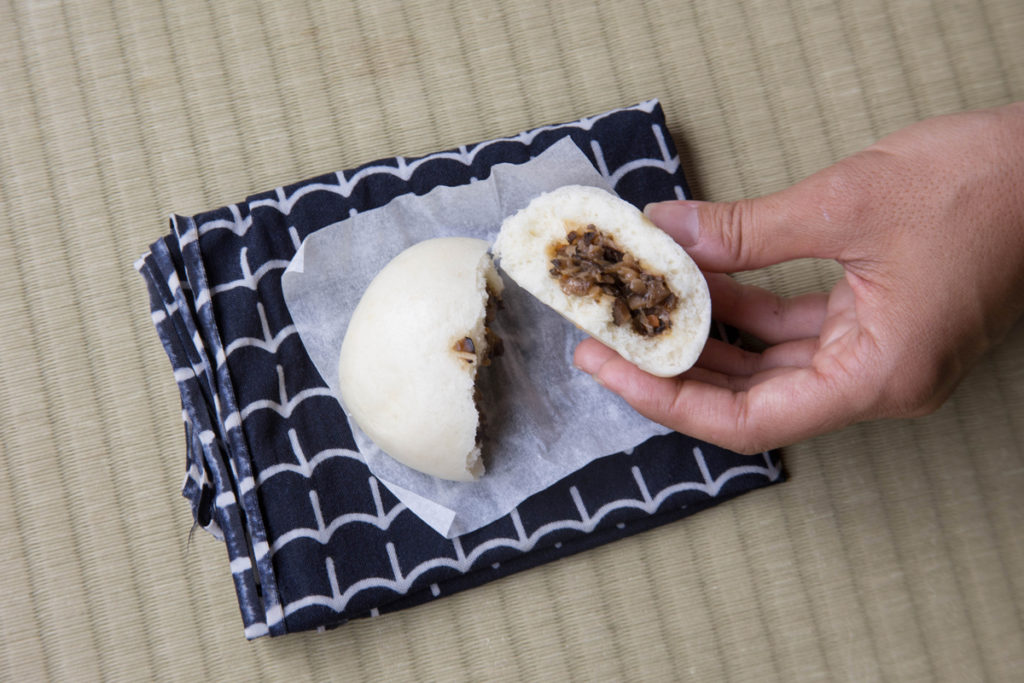
Kunisaki’s World-Beating Heritage Agriculture
“This pond is what makes the Kunisaki Peninsula special,” says Hiroaki Hayashi, Chairman of the “Kunisaki Peninsula Usa Region World Agricultural Heritage Promotion Council.” He is also a producer who has been running “Hayashi Farm” for generations.
“At “K4,” you can witness the distinctive agricultural culture of the Kunisaki Peninsula, which was designated a World Agricultural Heritage site. Sawtooth oak forests are scattered throughout this area, and the cultivation of shiitake mushrooms on logs – in which a sawtooth oak is cut down to make hodaki(logs for cultivating shiitake) – is thriving. New seedlings sprout from the cut stumps of sawtooth oak, and the young trees take about 15 years to grow back to their original size, so there is no need to plant new trees.Not only that, but young trees have been demonstrated to absorb carbon dioxide at a better rate than old trees. Once the trees have grown, they are cut down again, and the trees are used to regenerate the forest. We have a system in place to nurture forests in a sustainable and cyclical manner without straining the environment.”
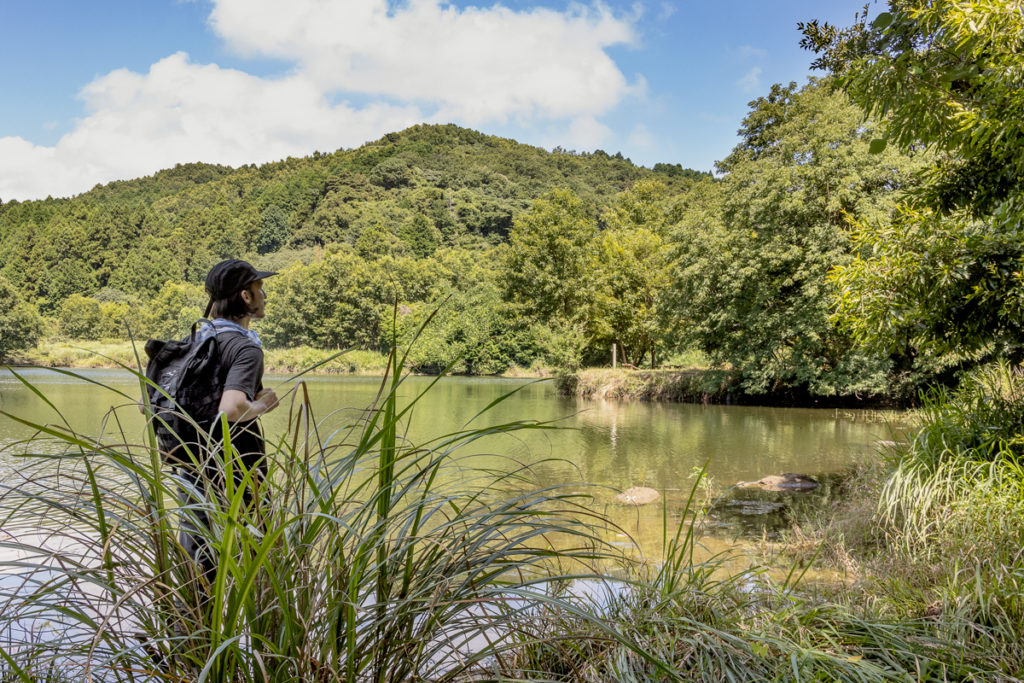
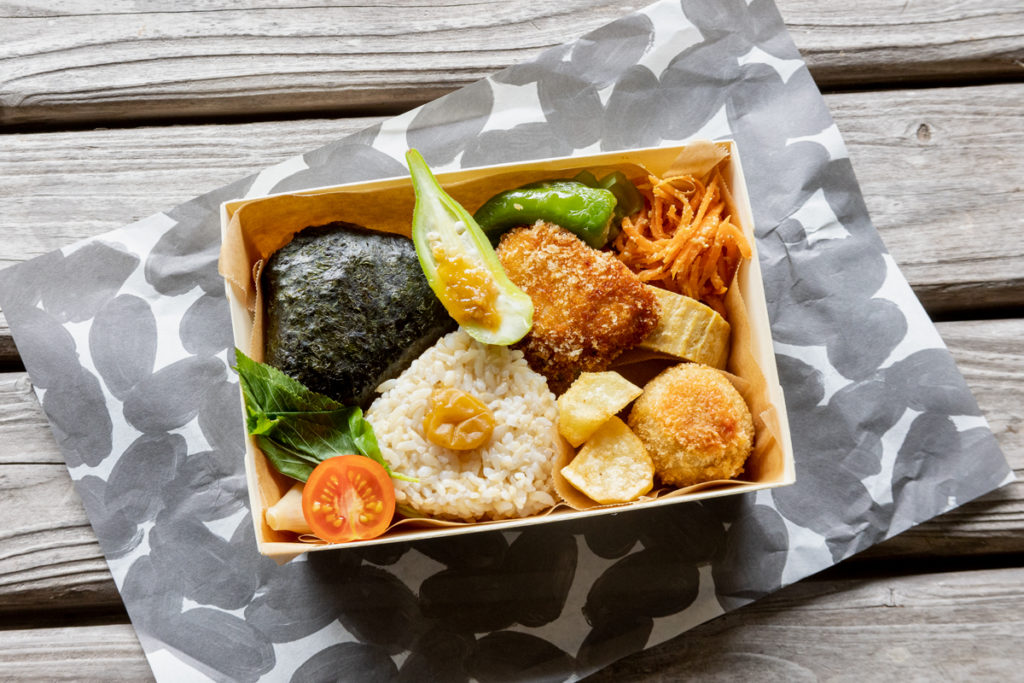

In addition, fallen leaves are decomposed and returned to the soil as organic matter, thereby enhancing the water retention capacity of the soil. In the past, people used this water to create reservoirs to irrigate their crops, and these reservoirs are still functioning today. The importance of this recycling-oriented agriculture, forestry, and fisheries industry using sawtooth oak forests and reservoirs has been recognized worldwide, and the area was recognized as a “World Agricultural Heritage Site” in 2013.
“There is a worldwide shift toward sustainable agriculture and forestry, where forests are harnessed as forests and benefits are derived from them, rather than the old-style agriculture and forestry where forests are cleared to grow highly productive agricultural products. I believe that the only way to solve global warming is through forestation. Please take note of the “good forests” that Kunisaki is so proud of.”
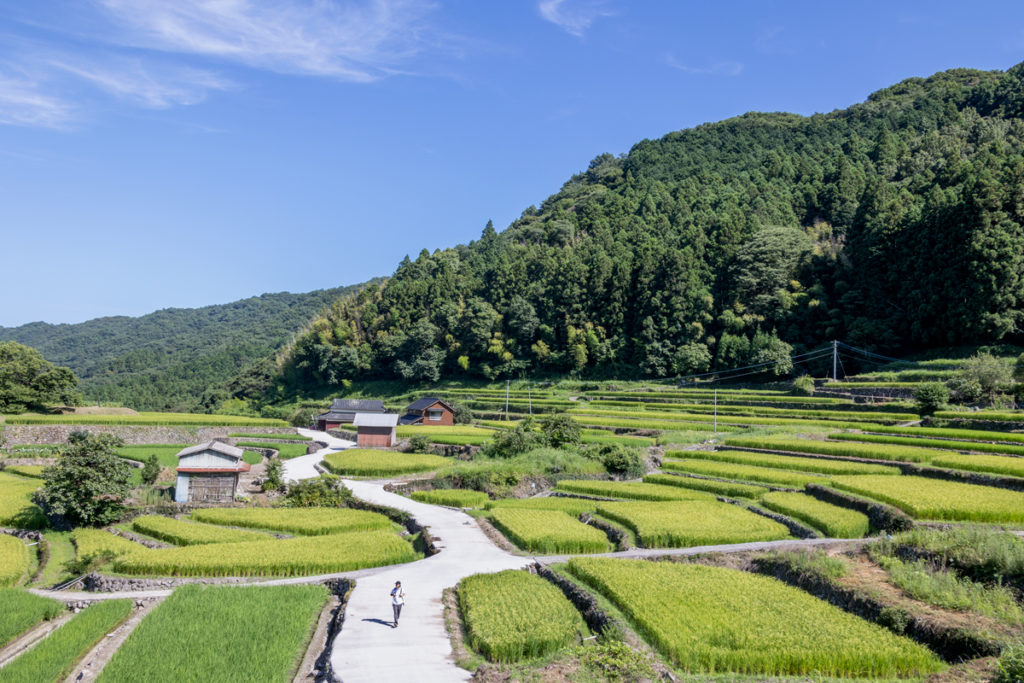
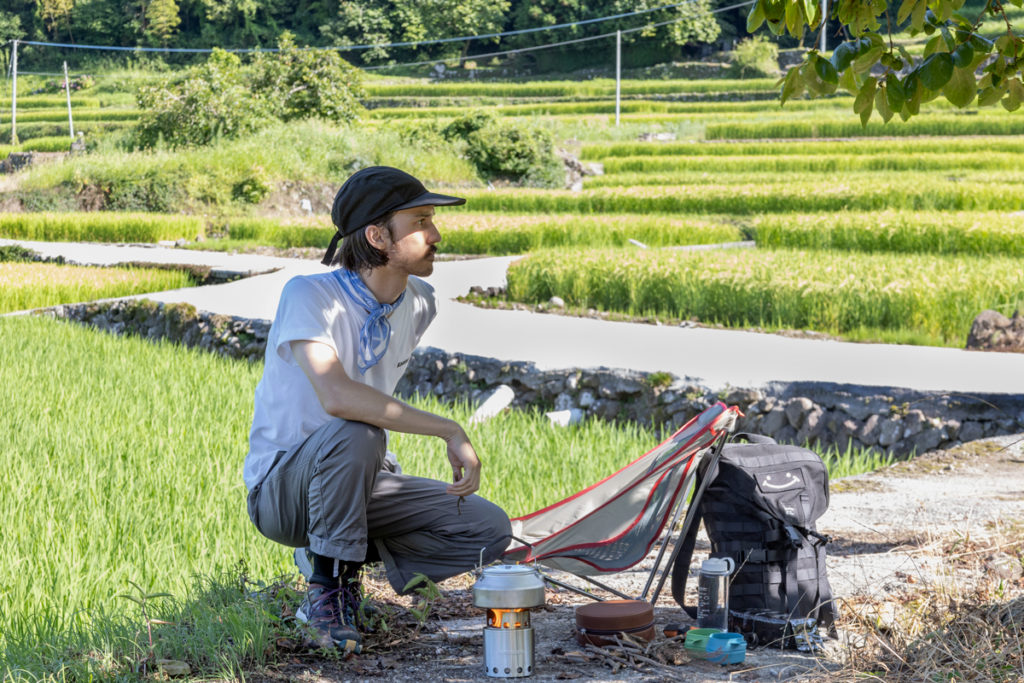
This time, we opted for a farm stay to sample the fruits of this recycling-oriented agriculture. The first night is spent at “Komorebi Sanso.” The Izekis, who lived in Canada for a long time, serve up Western-style cuisine brimming with seasonal vegetables harvested from their garden. Mr.Izeki is an oceanographer by trade, and we find ourselves fixated on his stories regarding the latest marine ecosystems. The second night was spent at “Maruka III,” run by Mr. and Mrs. Uehira, who upped sticks to the Kunisaki Peninsula from Saitama Prefecture 10 years ago and started a new farming business. Uehira grows naturally, using no pesticides or fertilizers, and continues to cultivate about 20 kinds of seed a year. He has a noble mission: “I want to dedicate my life to the handing down of seeds”. Each of the farm-stays revealed interesting attitudes towards food.
Terrain that evokes the tremendous energy of the earth, the culture of “Rokugo Manzan,” and the eco-systems and wisdom of ancestors that live on in traditional agriculture. A trail hike along the Kunisaki Peninsula with its abundance of seasonal delicacies is quite simply an experience that is hard to beat.
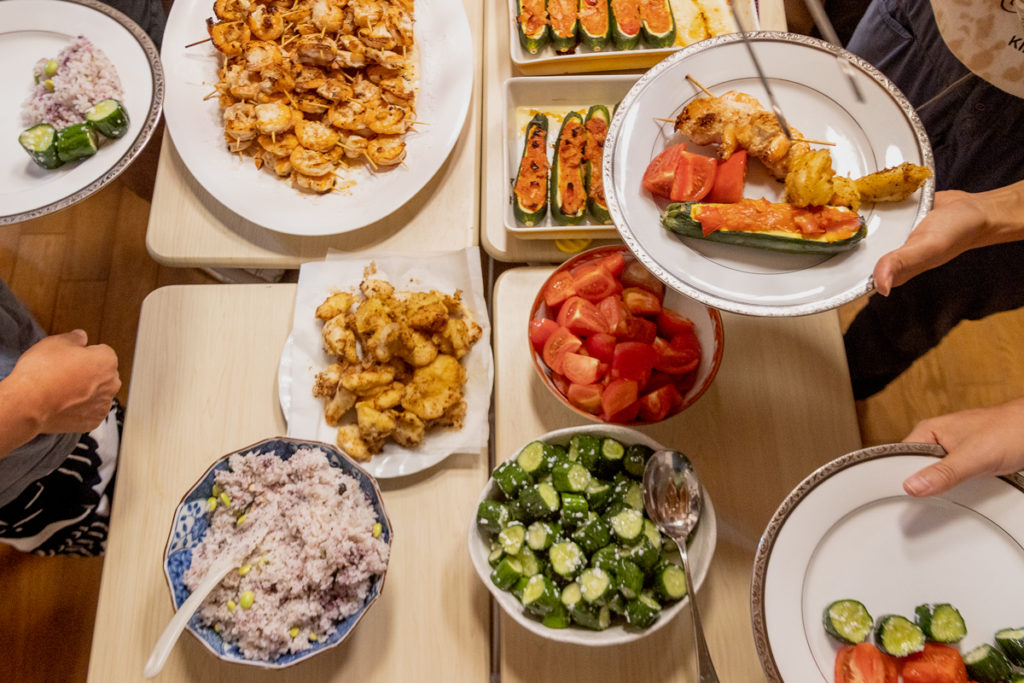
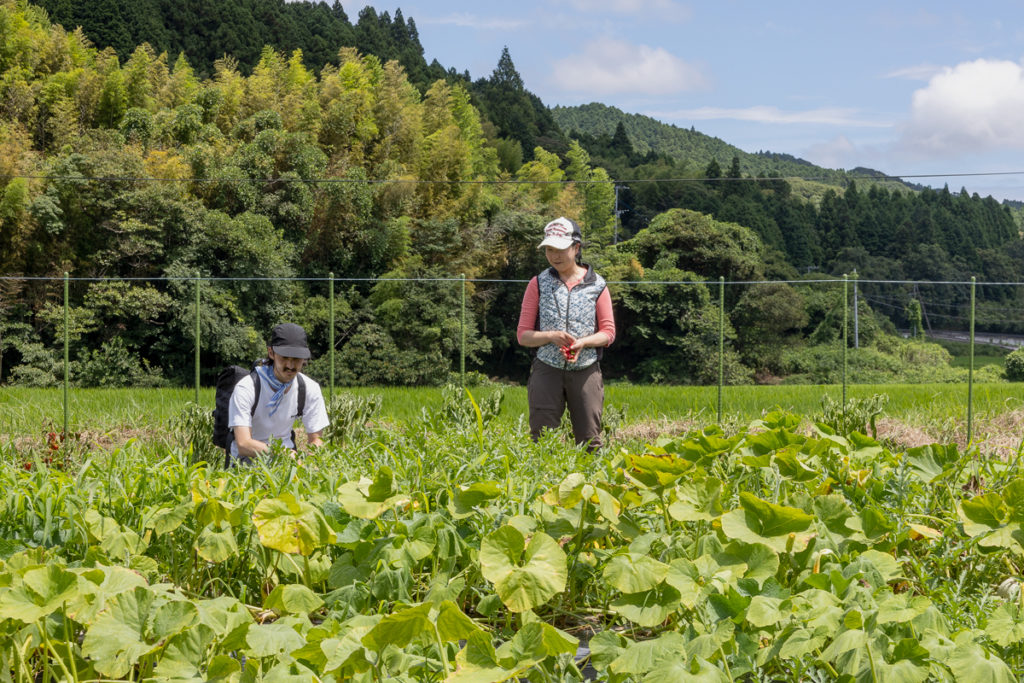
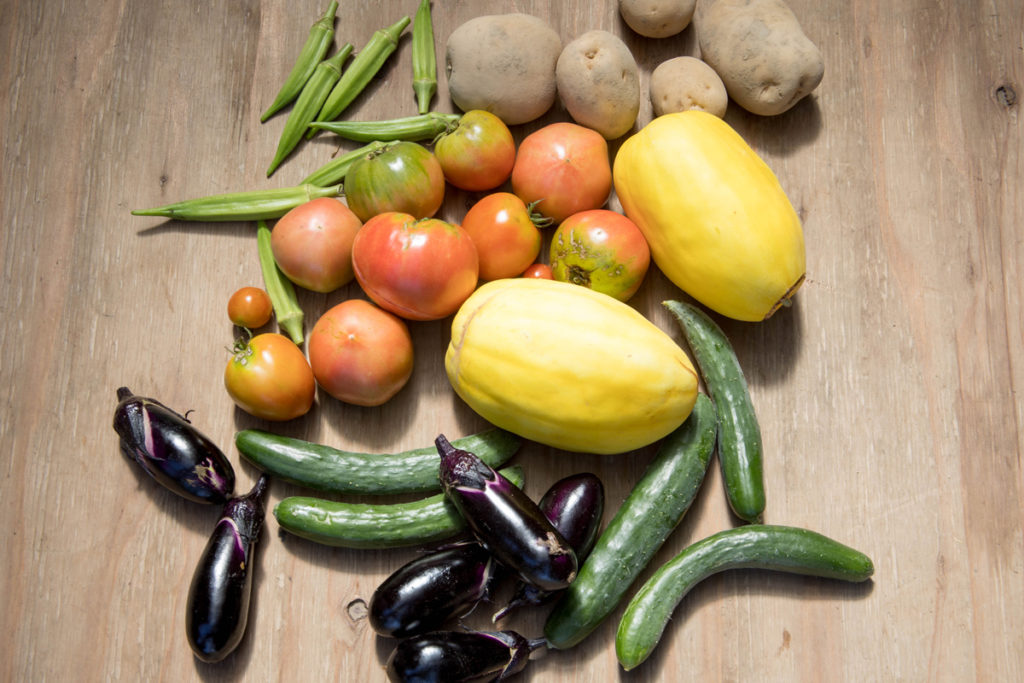
Trail Guide
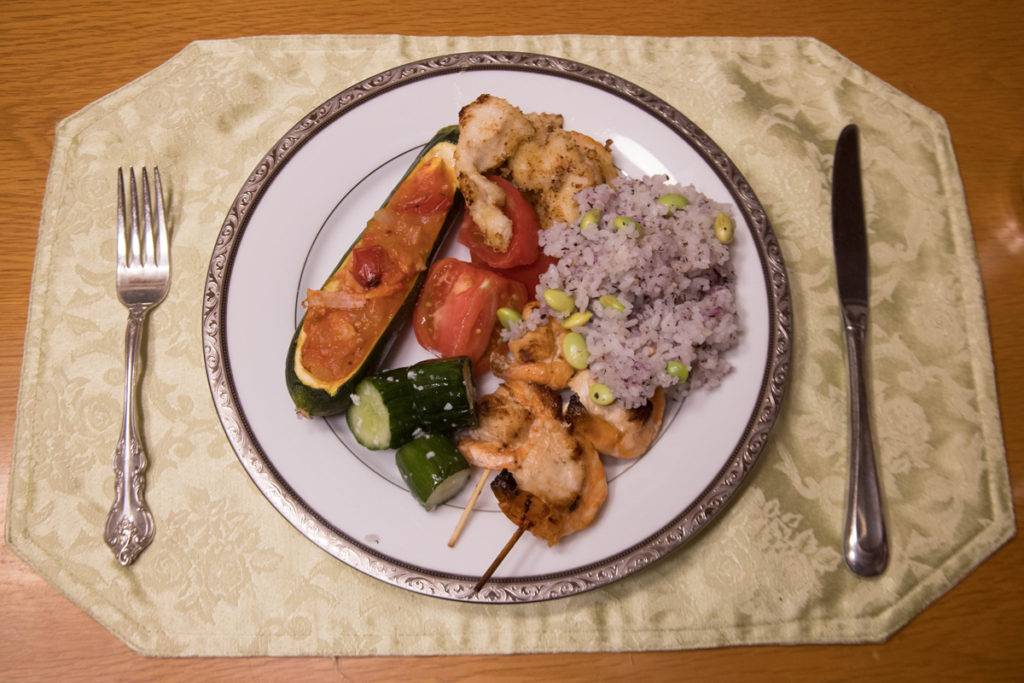
1938 Kunisakimachi Kunora, Kunisaki-shi, Oita

3029-1 Akimachi Meiji, Kunisaki-shi, Oita
Kunisaki-hantou Minemichi Long Trail Club
2662-1 Kunisakimachi Ohara, Kunisaki-shi, Oita

The route of the Kunisaki-hantou Minemichi Long Trail is now available. Although it is weakly different from the route of PAPERSKY’s ancient trail walking above, please refer to this route.
The course is dotted with rocky and sloping terrain. Please bring hiking gear and a map. Please refer to the Old Japanese Highway Kunisaki-hantou Minemichi Long Trail Club website for trail rules. Official maps are available at the Kunisaki Tourist Information Center in the Kunisaki Cycling Terminal at Roadside Station.












